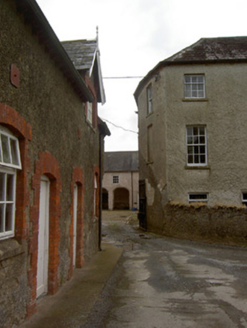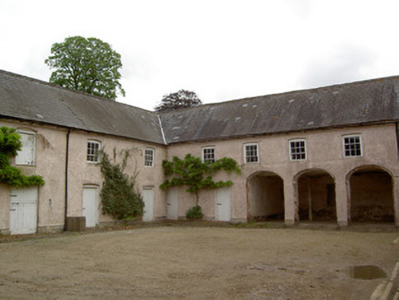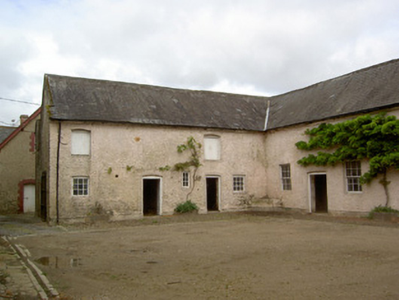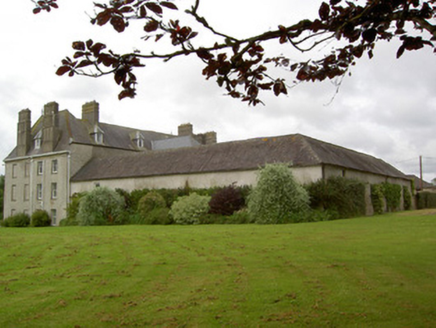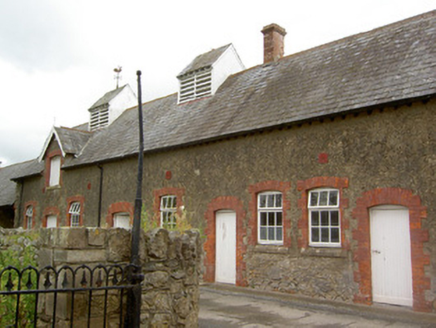Survey Data
Reg No
22207613
Rating
Regional
Categories of Special Interest
Architectural
Previous Name
Barn House
Original Use
Farmyard complex
In Use As
Farmyard complex
Date
1850 - 1890
Coordinates
215569, 124539
Date Recorded
24/06/2005
Date Updated
--/--/--
Description
Two-storey outbuildings to yard at rear of Barne Park, built c. 1870, having pitched slate roofs with eaves courses and painted roughcast rendered walls. East range has arcade of three segmental carriage entrances, and with segmental-headed timber sliding sash six-over-three pane windows to first floor and timber battened doors to ground floor. West range has segmental-headed six-over-six and six-over-three pane timber sliding sash windows and timber battened doors to ground floor and segmental-headed timber battened pitching doors to first floor. Range of five two- and three-bay single-storey former workers' houses to west of yard. End houses have dormer attics. Pitched slate roof with timber bargeboards to east gable and to dormer openings, former with carved timber brackets and latter with carved timber finials. Red brick chimneystacks and timber louvered vents, roughcast rendered walls with rounded south-east corner having render quoins with stop. Tie-plates to long walls and red brick block-and-start surrounds to segmental-headed widow and door openings, having timber casement widows and timber battened doors. Three-over-three pane timber sliding sash window to upper east gable. Single-storey outbuildings further to west, connected to worker's houses by covered square-headed archway. Pitched slate roofs and partly roughcast rendered walls with segmental-headed red brick block-and-start surrounds to window and door openings.
Appraisal
This fine courtyard of two-storey outbuildings, associated with Barne Parke, post-dates the latter by perhaps a century and a half. It is distinguished by the arcade to the east range and the retention of slate roofs throughout and timber sash windows. The former workers' houses have retained most of their features and are a relatively rare and intact example of such housing and add significantly to the demesne to which they are attached. The brick detailing betrays a late nineteenth-century date and the regular pattern of window and door openings is aethetically pleasing. Together with the associated walled garden and workers' houses, these outbuildings add significantly to the context of the country house.
